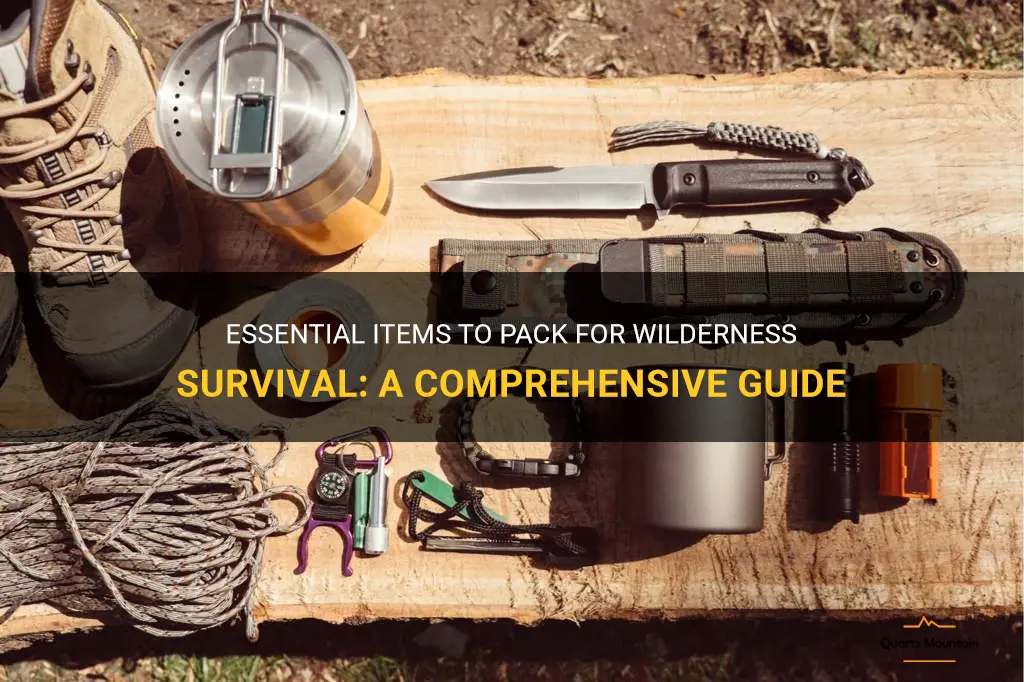
Have you ever wondered what it takes to survive in the wild? Whether you're an avid hiker or a casual camper, it's important to be prepared for any situation that may arise. In this comprehensive guide, we will explore the essential items you need to pack for wilderness survival. From protective gear to food and water supplies, we've got you covered. So grab your backpack and get ready to embark on your next wilderness adventure with confidence!
| Characteristics | Values |
|---|---|
| Water | Sufficient amount of clean drinking water |
| Food | Non-perishable and easy-to-carry food |
| Shelter | Lightweight tent or tarp and sleeping bag |
| Clothing | Layered clothing appropriate for weather |
| Fire-making tools | Waterproof matches, lighter, or fire starter |
| Navigation | Compass and map or GPS device |
| First Aid Kit | Essential first aid supplies |
| Tools | Knife, multi-tool, and duct tape |
| Communication | Whistle, signal mirror, and flashlight |
| Signaling | Flares or signal flare gun |
| Personal Protection | Insect repellent, sunscreen, and hat |
| Extra Supplies | Rope, paracord, and extra batteries |
| Emergency Shelter | Emergency blanket and poncho |
| Repair Kit | Sewing kit and patching materials |
| Knowledge | Survival guide and basic wilderness skills |
What You'll Learn
- What are the essential items to pack for wilderness survival?
- How do you choose the right clothing for wilderness survival?
- What types of food and water should you pack for wilderness survival?
- Are there any specific tools or equipment that should be included in your wilderness survival pack?
- What considerations should be taken into account when choosing a backpack for wilderness survival?

What are the essential items to pack for wilderness survival?
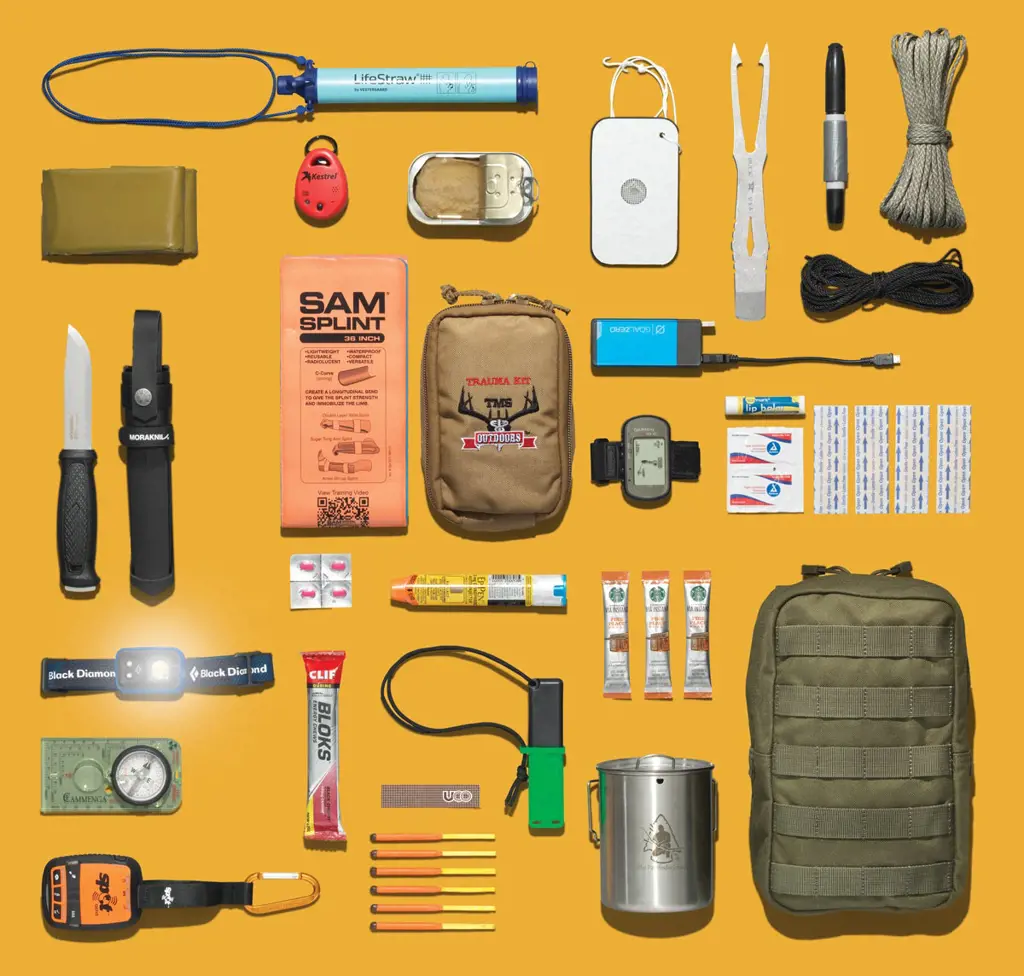
When venturing into the wilderness, it is essential to come prepared with the right supplies in order to ensure your survival. Whether you plan on a short day hike or an extended trip into the backcountry, having the necessary items can make all the difference. In this article, we will explore the essential items to pack for wilderness survival, drawing on scientific research and expert recommendations.
- Navigation tools: A map and compass are vital for navigation in the wilderness. They allow you to orient yourself, find your way, and avoid getting lost. It is always a good idea to brush up on your map reading and compass skills before heading into the wilderness.
- Shelter: A lightweight and durable tent or tarp is a must-have for wilderness survival. It provides protection from the elements and a place to rest and sleep. Look for a model that is easy to set up and pack, as well as waterproof and windproof.
- Fire starter: Fire is crucial for keeping warm, cooking food, and signaling for help. Pack a reliable fire starter such as waterproof matches, a lighter, or a fire starter rod. Additionally, bring along some tinder, such as cotton balls soaked in petroleum jelly or dryer lint, to help get the fire going.
- Water filtration: Clean drinking water is essential for survival, as dehydration can quickly become a life-threatening problem. Pack a water filtration system or purification tablets to ensure you have access to safe drinking water. It is also a good idea to bring a water bottle or hydration bladder to carry water on the go.
- First aid kit: Accidents can happen in the wilderness, so it is important to have a well-equipped first aid kit. Include items such as bandages, antiseptic wipes, pain relievers, and tweezers. If you have any specific medical conditions, make sure to pack any necessary medications or supplies.
- Food and cooking utensils: Pack enough food for the duration of your trip, focusing on lightweight and non-perishable options. Consider bringing energy bars, trail mix, and dehydrated meals. Also, bring cooking utensils such as a lightweight stove, pot, and utensils for preparing meals.
- Clothing and personal items: Dressing appropriately for the weather and terrain can help prevent hypothermia and other cold-related illnesses. Pack waterproof and insulating layers, as well as a hat, gloves, and sturdy footwear. Don't forget essentials such as sunscreen, insect repellent, a headlamp or flashlight, and a multi-tool.
- Communication and signaling devices: Being able to communicate with others and signal for help is crucial in case of an emergency. Pack a fully charged cell phone, a portable charger, and a whistle. Additionally, consider bringing a satellite phone or personal locator beacon for remote areas with no cell reception.
- Survival knowledge: Along with the physical items, it is vital to have some basic wilderness survival knowledge. This includes knowing how to build a shelter, start a fire, find and purify water, and navigate with a compass and map. Taking a wilderness survival course or reading books on the subject can help you acquire these essential skills.
In conclusion, packing the right items for wilderness survival is crucial for your safety and well-being in the outdoors. By including navigation tools, shelter, fire starter, water filtration, first aid kit, food, clothing, communication devices, and survival knowledge, you can be better prepared for any situation that may arise. Remember to always plan and prepare before heading into the wilderness and to stay safe by following best practices and guidelines.
Essential Items to Pack for a Memorable Vacation to Myrtle Beach
You may want to see also

How do you choose the right clothing for wilderness survival?
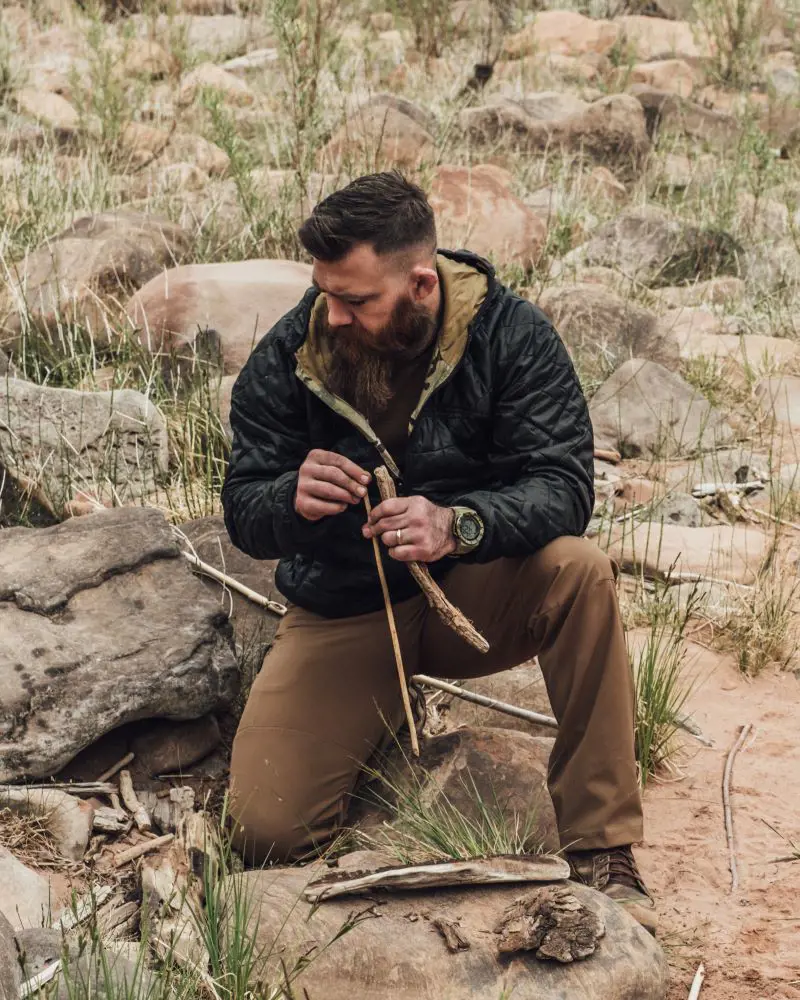
Surviving in the wilderness requires careful planning and preparation, and one of the key factors to consider is choosing the right clothing. Proper attire not only protects you from the elements but also helps regulate body temperature and prevent injuries. Here are some guidelines to help you choose the right clothing for wilderness survival:
- Layering is key: Layering your clothing allows you to add or remove layers as needed to adapt to changing weather conditions. A base layer made of moisture-wicking material, such as wool or synthetic fabrics, helps to draw sweat away from your body, keeping you dry and warm. Avoid cotton as it retains moisture and can lead to hypothermia in cold and wet conditions.
- Insulation: The middle layer provides insulation to retain body heat. Fleece jackets, down vests, or synthetic insulated jackets are excellent choices for this layer. These materials have high insulation properties and are lightweight, making them ideal for outdoor activities.
- Outer shell: The outer layer should be windproof, waterproof, and breathable to protect you from the wind, rain, and snow. Look for jackets and pants made from durable fabrics like Gore-Tex or eVent, which provide excellent protection against the elements while allowing moisture to escape.
- Footwear: Your choice of footwear is crucial for wilderness survival. Invest in a sturdy pair of hiking boots with good ankle support and a firm sole. Look for waterproof and breathable materials to keep your feet dry and comfortable. Additionally, wool or synthetic socks are recommended to wick away moisture and prevent blisters.
- Headwear: A hat or beanie is essential to prevent heat loss from your head. Choose a hat that covers your ears and provides insulation, preferably made of wool or a synthetic material. Additionally, a wide-brimmed hat or cap can protect your face and neck from the sun's harmful rays.
- Gloves: Protecting your hands is crucial in the wilderness. Insulated gloves made of waterproof materials will keep your hands warm and dry. Look for gloves with good dexterity, allowing you to perform tasks without hindrance.
- Accessories: Don't forget to pack other accessories like a scarf or a neck gaiter to protect your neck from cold winds. Sunglasses with UV protection are also important, as snow and sun can cause sunburn and eye damage. And always carry a lightweight, waterproof backpack to store extra clothing layers or to shed layers when necessary.
Choosing the right clothing for wilderness survival is essential to your comfort, safety, and overall well-being in challenging outdoor conditions. By following these guidelines and considering the specific weather conditions you may encounter, you can ensure that you are well-equipped to face the elements and emerge unscathed from your wilderness adventure.
Essential Items to Pack for a 3-Month Adventure in California
You may want to see also

What types of food and water should you pack for wilderness survival?
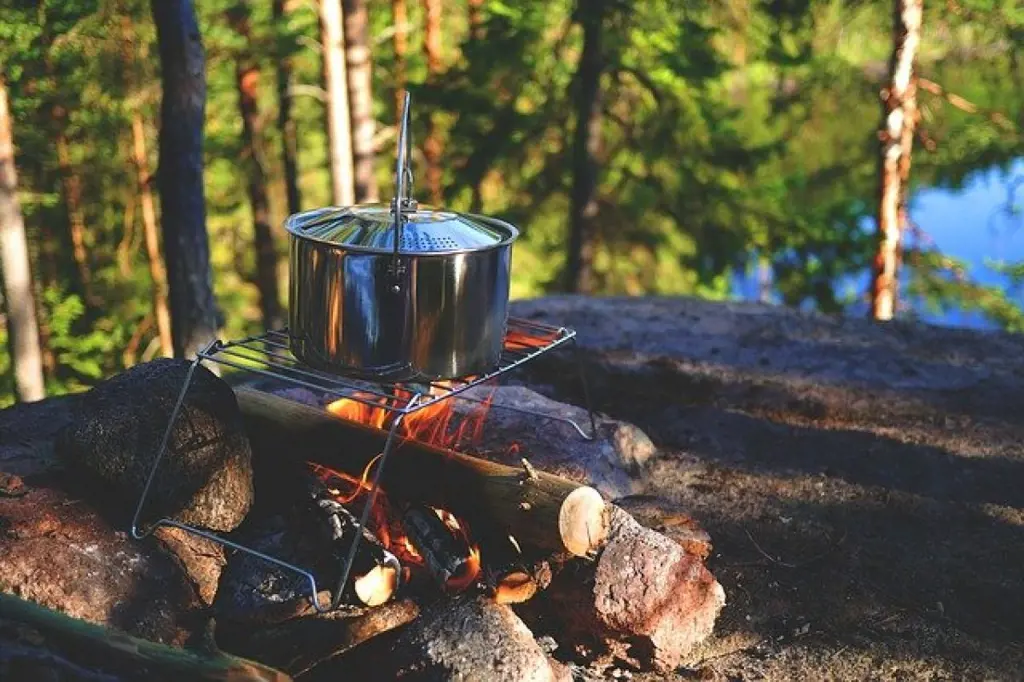
When it comes to wilderness survival, having enough food and water is crucial for your survival. In the absence of readily available resources, it is important to pack the right types of food and water to sustain yourself in the wild. Here are the key considerations for packing food and water for wilderness survival:
Water:
- Water is essential for survival, and it should be your top priority to ensure a sufficient supply. Carry a reliable water filter or purification tablets to make water from natural sources safe to drink.
- Pack multiple water bottles or containers to store and carry water with you. Consider lightweight and durable options that won't take up too much space in your backpack.
- If you know you'll be in an area with limited water sources, consider carrying a larger water bladder or collapsible water container. This will allow you to transport larger quantities of water when you come across a water source.
Non-perishable Food:
- Choose non-perishable food items that are lightweight, easy to carry, and provide a good balance of nutrients. Examples include energy bars, trail mix, dried fruits, nuts, granola, and dehydrated meals. These foods have a long shelf life and can be easily stored in your backpack.
- Aim for foods that are high in calories to provide you with the energy you need in a survival situation. Look for options that are specifically designed for survival or outdoor activities, as they are often formulated to provide a concentrated source of nutrients.
- Consider your dietary restrictions and preferences when selecting food items. If you have specific dietary needs, make sure to pack foods that meet those requirements. This could include options like gluten-free or vegan food bars.
Fishing and Foraging:
- In addition to packing food, you can also consider fishing and foraging as a means of obtaining food in the wild. Before setting out, research the area you'll be in and learn about the edible plants and wildlife that can be found there.
- Pack a lightweight fishing kit with hooks, line, and bait. This will allow you to catch fish if you come across a suitable water source.
- Learn about edible plants in the area and be cautious when foraging. Only consume plants that you can confidently identify and that are safe to eat. A field guide or app can be helpful in identifying edible plants.
Meal Planning:
- Plan your meals in advance to ensure that you have enough food for the duration of your trip. Consider portion sizes and the number of meals you'll need to pack.
- Opt for meals that can be easily prepared with minimal cooking equipment. Remember that you may not have access to a stove or a fire, so choose foods that can be eaten cold or require minimal cooking.
- Pack some comfort foods or treats to boost morale. These can provide a psychological boost in a survival situation.
Remember, it is always better to overestimate the amount of food and water you'll need rather than underestimate it. The duration of your trip, the difficulty of the terrain, and the climate will all affect your food and water requirements, so plan accordingly. Be prepared and stay safe in the wilderness by packing the right types of food and water for your survival.
Essential Packing Guide for a Memorable Honeymoon in Paris, France
You may want to see also

Are there any specific tools or equipment that should be included in your wilderness survival pack?
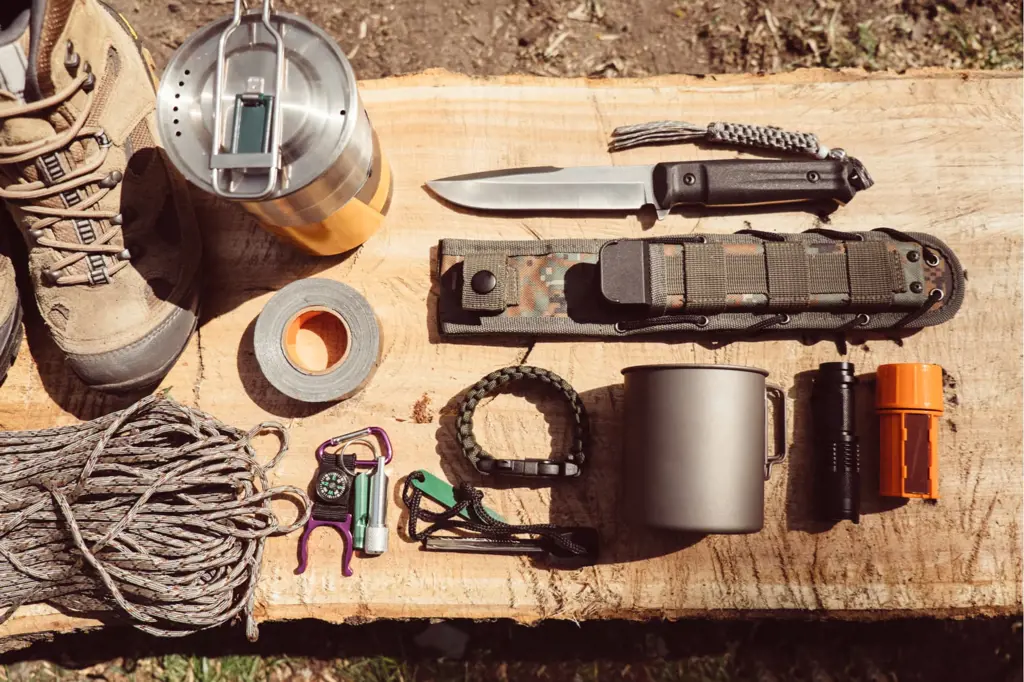
When venturing into the wilderness, it is essential to be prepared with a well-stocked survival pack. This pack should contain various tools and equipment to ensure your safety and increase your chances of survival in case of an emergency. Here, we will discuss some specific tools and equipment that should be included in your wilderness survival pack.
Navigation Tools:
A reliable compass and topographic map are essential for navigating through unfamiliar terrain. These tools can help you determine your location, plan your route, and avoid getting lost. Consider investing in a compass with a built-in magnifying glass, as it can also be useful for starting fires.
Fire Starting Supplies:
Fire is essential for warmth, cooking, and signaling for help. Make sure to include several fire-starting supplies in your survival pack, such as waterproof matches, a lighter, or a high-quality fire starter. It is also helpful to carry some tinder, which can be easily ignited to start a fire.
Shelter Building Materials:
In case you are unable to find natural shelter, it is crucial to have materials to construct a temporary shelter. Include a lightweight, waterproof tarp or an emergency bivvy in your pack. These items can provide protection from the elements and help you stay dry and warm.
Water Filtration System:
Access to clean drinking water is vital for survival. Include a portable water filtration system or purification tablets in your pack. These tools can help remove bacteria, viruses, and other contaminants from water sources, making it safe to consume.
First Aid Kit:
A well-stocked first aid kit should include basic medical supplies such as bandages, antiseptic wipes, adhesive tape, pain relievers, and any prescription medications you may need. Familiarize yourself with the contents of your first aid kit and how to use them effectively.
Multi-tool or Knife:
A versatile multi-tool or a sturdy knife is a must-have tool for various survival tasks. It can be used for cutting, slicing, opening cans, and even as a self-defense tool. Choose a high-quality tool with multiple functions to save space in your pack.
Emergency Whistle:
An emergency whistle is a small yet powerful tool for attracting attention and signaling for help. It is much louder and carries farther than shouting. Make sure to attach it to your pack or keep it easily accessible.
Emergency Shelter:
Carrying a lightweight and compact emergency shelter, such as a space blanket or a small tent, can provide additional protection and comfort during unexpected circumstances.
Food and Water:
Include lightweight and non-perishable food items in your pack, such as energy bars, nuts, and dried fruits. These items can provide sustenance during emergencies. Additionally, carry extra water in reusable water bottles or collapsible containers.
Personal Protection:
Consider including personal protection items like insect repellent, a whistle, a lightweight rain jacket, and sunscreen in your survival pack. These items can prevent unnecessary discomfort and protect you from environmental hazards.
Remember, the specific tools and equipment you include in your wilderness survival pack may vary depending on the location, climate, and duration of your trip. It is essential to assess your needs and pack accordingly. Additionally, practicing survival skills and familiarizing yourself with the tools in your pack can increase your chances of survival in the wilderness.
Essential Items to Pack for Your Trip to Molokai, Hawaii
You may want to see also

What considerations should be taken into account when choosing a backpack for wilderness survival?
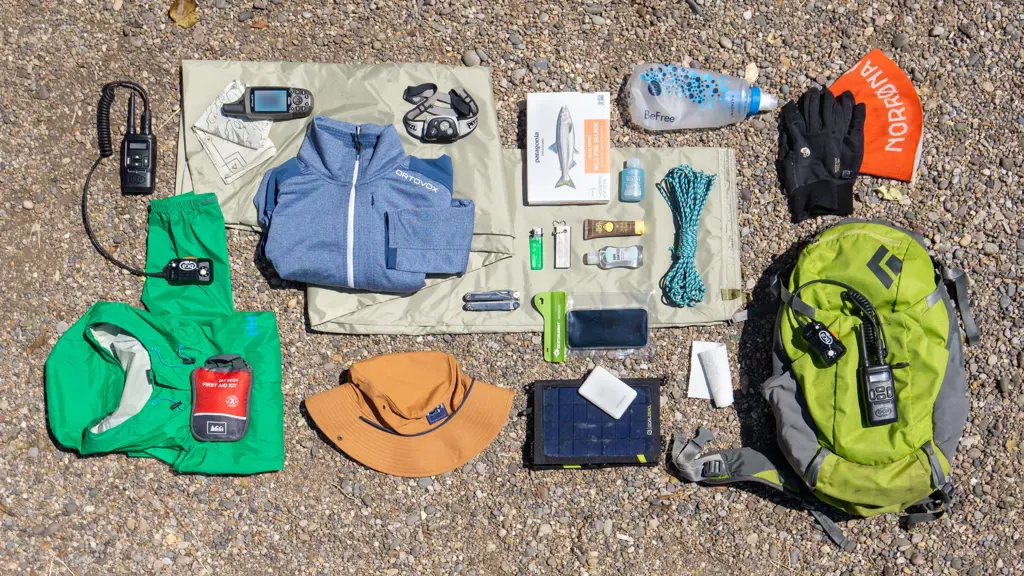
When it comes to wilderness survival, one of the most important pieces of equipment to have is a reliable backpack. A backpack serves as your lifeline, carrying all the essential items needed for survival. However, choosing the right backpack for wilderness survival requires careful consideration and attention to detail. In this article, we will discuss the factors that should be taken into account when selecting a backpack for wilderness survival.
Durability is the first and foremost consideration when choosing a backpack for wilderness survival. In the harsh, rugged environment of the wilderness, your gear will be subjected to constant wear and tear. Look for a backpack made of high-quality materials such as ballistic nylon or Cordura, which are known for their durability and resistance to abrasion. Reinforced stitching and heavy-duty zippers are also important features to look for in a wilderness survival backpack.
Another important factor to consider is the size and capacity of the backpack. The backpack should be spacious enough to accommodate all your essential gear, such as a tent, sleeping bag, cooking equipment, and food supplies. It should also have multiple compartments and pockets to help you organize your gear and access items quickly when needed. However, keep in mind that a larger backpack may be heavier and more cumbersome to carry, so strike a balance between size and weight.
Comfort is an essential consideration, as you will likely be carrying the backpack for extended periods of time. Look for a backpack with ergonomic padding on the straps and back panel to distribute the weight evenly and prevent discomfort and strain on your shoulders and back. Adjustable straps and a padded waist belt are also important features that allow you to customize the fit of the backpack to your body.
Water resistance is another crucial factor to consider when choosing a backpack for wilderness survival. The wilderness can be unpredictable, and you may encounter rain, rivers, or other sources of water during your journey. A backpack with a water-resistant or waterproof coating will ensure that your gear stays dry and protected, preventing it from becoming damaged or unusable.
In addition to these factors, consider the overall weight and design of the backpack. Look for lightweight materials and a streamlined design that minimizes unnecessary bulk. A bulky backpack can restrict your movement and make it difficult to navigate through dense wilderness terrain. Also, consider the accessibility of the backpack. Look for features such as a top-loading design or side-access zippers that allow you to easily retrieve items without having to unpack everything.
To illustrate the importance of choosing the right backpack for wilderness survival, let's consider an example. Imagine you are embarking on a week-long backpacking trip in a remote wilderness area. You have carefully planned and gathered all the necessary equipment and supplies for survival. However, halfway through your journey, you find that the straps on your backpack are fraying and the zippers are beginning to fail. As a result, your gear becomes exposed to the elements, and you are left struggling to carry your supplies without proper support. This situation emphasizes the importance of selecting a durable and reliable backpack that can withstand the rigors of the wilderness.
In conclusion, choosing the right backpack for wilderness survival requires careful consideration of factors such as durability, size and capacity, comfort, water resistance, weight, and design. By taking these considerations into account and selecting a backpack that meets your specific needs, you can ensure that you are well-prepared for any wilderness survival situation. Remember, your backpack is your lifeline, so choose wisely.
What Clothes Should I Pack for a Trip to Colombia?
You may want to see also
Frequently asked questions
The most important items to pack for wilderness survival are a knife, a firestarter, a water purification method, a shelter, and a first aid kit. These items are essential for providing basic necessities such as food, water, and shelter.
A knife is an important item to pack for wilderness survival because it has multiple uses. It can be used for cutting branches, preparing food, building shelter, and even for self-defense if necessary.
When looking for a firestarter for wilderness survival, it is important to choose one that is waterproof and reliable. A fire is crucial for warmth, cooking food, and purifying water, so having a firestarter that can withstand wet conditions is essential.
Having a water purification method is crucial for wilderness survival because drinking contaminated water can lead to illness or even death. Water can be purified using various methods such as boiling, using water purifying tablets, or using a portable water filter.
The type of shelter you should pack for wilderness survival depends on the environment you will be in. Generally, a lightweight and waterproof tent or tarp can provide sufficient protection from the elements. It is also important to pack appropriate sleeping gear to stay warm and comfortable during the night.







